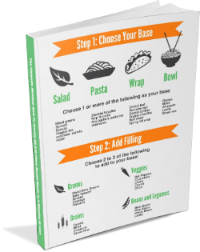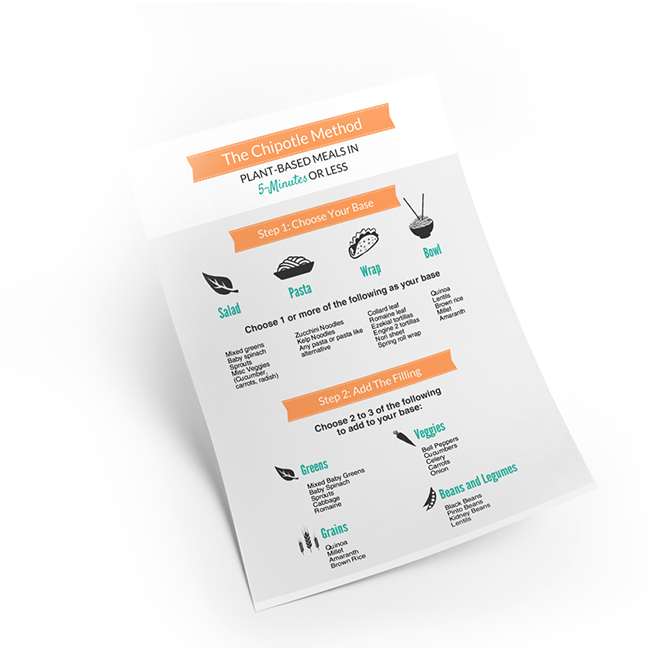
Photo credit: Moyan Brenn
If you haven’t tried it, you’ve at least heard about it — this simple technique whose advocates range from monks to psychologists to business men.
The practice is supported by a continually growing body of research and can significantly reduce stress, counter depression, make you feel better about yourself and your life, and is of course an integral part of many important spiritual traditions.
If those aren’t enough accolades for you, check out this quote from bestselling author and award winning psychologist Jonathan Haidt as he compares meditation to prozac.
Suppose you read about a pill that you could take once a day to reduce anxiety and increase your contentment. Would you take it? Suppose further that the pill has a great variety of side effects, all of them good: increased self-esteem, empathy, and trust; it even improves memory. Suppose, finally, that the pill is all natural and costs nothing. Now would you take it? The pill exists. It’s called meditation.
~ Jonathan Haidt from The Happiness Hypothesis
Ok, lets say Dr. Haidt convinces you. You know the benefits. You’re intrigued by the Dalai Llama’s invitation to give it a try. You decide to go for it.
After all, it’s easy right? You just sit quietly, close your eyes, and do…nothing. Your mind quiets right down, you feel relaxed and drift gently into transcendental experience after transcendental experience where you instantly find inner peace and happiness…for about 30 seconds.
Then all of the sudden you find yourself thinking about the facebook status you are going to post about how much you rock at this meditation thing. You bring your attention back to your breath and this makes you anxious, which leads you to breath funny, which makes you more anxious.
Then you remember that jerk that cut you off earlier and you feel a surge of anger, followed by the terrible realization that you haven’t mopped the kitchen floor and it could really use a good mopping! Logically, the thought that follows that one is about teletubbies. Yes, teletubbies.
You realize you ‘re clenching your fists, and go back to focusing on your breath. This makes you more anxious.
After seven minutes and 20 seconds your inner state more closely resembles mild panic than inner peace and you decide, “Um, I don’t think this is for me.”
If you’ve ever tried meditation and quickly decided that it wasn’t for you, you aren’t alone.
While the story above is a touch dramatic, the truth is that the vast majority of us struggle with meditation. I tried to meditate for years before finally experiencing that ‘ah ha moment’ where I got a glimpse of what all these crazy folks were talking about.
Years after my first meditation attempts, the practice has become an incredibly important part of my life.
Meditation is now a tool that I use on a daily basis to relieve stress, get centered, reconnect, and just spend a few quiet moments enjoying a heightened experience of life.
It’s beautiful just to sit and feel the sun on my skin, hear the birds chirping, noticing the rise and fall of my breath.
While the experience doesn’t always leave me happy (sometimes when you get clear, you get a fuller taste of the challenges you are facing that need to be addressed), it has without a doubt made me a happier person.
And every now again I get a glimmer of that elusive inner peace.
But the interesting thing is that I didn’t get there by trying to sit down and meditate.
My many attempts, and subsequent failures, gave me insight into what exactly the problem was when I finally had the break through…that first time that I got up thinking, “Oh this is meditation!”
If I could go back and counsel the restless minded me, here is what I would have said.
Everything you’ve been taught about meditation is wrong.
Looking back at my struggles, I realize that I had three major problems. You might have them too:
- Your first problem with meditation is that you think you know what meditation is.
- Your second problem with meditation is that you think you know how to meditate.
- And your third problem with meditation is that you think you know what meditation is going to get you.
The Most Common Meditation Myths
Meditation is not about experiences. Meditation is not about quieting the mind. Meditation is about being present with whatever is happening to you. Right now. Moment to moment.
All these other shiny benefits that people talk about are side effects. Yes it relieves stress, yes the mind gets quieter, yes you’ll experience more peace and happiness. But the weird part is that you can’t try to do this.
When you begin to meditate, you quickly learn that you have no control whatsoever over whether or not thoughts pop into your head.
You cannot learn to quiet your mind. The mind becomes quiet when you stop trying to control it, and start observing it. Stop trying to quiet it because the more you try, the more you will fail.
Succeeding at Meditation Requires Changing Your Perspective
When you understand that meditation is about being present, aware, or mindful of whatever it is that you are experiencing then you cannot do it wrong. If you sit down to meditate and think about Oprah for 2 hours, then as long as you noticed at some point that you were thinking about Oprah, your meditation was a resounding success.
The not so sexy truth is that meditation serves to get you in touch with what is going on in your head, what is going on in your body, what is going on around you. You learn to watch it, and eventually you learn not to be so judgemental of those thoughts or feelings.
Whatever happens will happen. When you sit down to meditate you might feel quite sad. You might get angry. You might get frustrated. You might have terrible thoughts about the people you love (been there!). You might see parts of yourself that scare you very much.
In fact, let me share another dirty little secret: meditation probably won’t be fun for quite some time. It can be difficult and scary to get in touch with these aspects of yourself that you don’t necessarily want to see.
However, this is where the real benefit comes in. Through meditation we get more in touch with our own humanity, we get to know ourselves on a deeper level. We learn about ourselves. And eventually we become more accepting of ourselves and others.
As we become comfortable with looking at the totality of who we are, including the darker aspects of ourselves, our compassion and acceptance of others grows. As this self-discovery deepens we realize that we are more than our petty problems. They come and go. We are more than our thoughts. They also come and go.
And beneath all the transient stuff is some strange, permanent source of peace, happiness, and contentment. I’ll leave it up to the thousands of spiritual and religious texts to talk about that.
Now That You Know What Meditation Is, Here Is How To Get Started
So now that you have more (or perhaps less) of an understanding of meditation, lets talk about how you get there.
Unless you have discovered a secret that most of us haven’t, your life is probably a bit stressful. You have lots of responsibilities. Maybe kids? A job that doesn’t go just the way you want it to 100% of the time?
You have to drive around with other people who suck at driving, and talk to lots of people who think differently than you do.
And you have to somehow get a lot of this stuff called money so that you can buy the stuff that you need to stay alive! Pretty wild.
My point is that our modern way of life is not in any way, shape or form conducive to meditation. In fact, it would be miraculous if you sat down and went right into meditation.
This is why most of us need to use a gateway into meditation.
You see our minds follow patterns, and these patterns have a certain amount of inertia. If you’ve been at work for 8 hours, your mind is stuck in work mode and, just like a generator that has just been unplugged, it keeps spinning in work mode for a while until it slows down or you change the station.
The good news is that there are a few ways that can help you to slow down the motor so that you can more easily change the channel and prepare yourself for meditation. In fact, this is the way that I eventually found myself meditating.
At one point in my life I had written off meditation and instead started doing yoga. After a few months of steady yoga practice, I found myself sitting quietly for longer and longer periods when I was finished stretching.
Eureka! Accidental meditation!
Gateways to meditation:
- Yoga
- Going for a walk or bike ride
- Other exercise
- Listening to or playing music
- Devotional chanting (kirtan)
- Spending time in nature
- Massage or bodywork
- Bath or shower
- Spending time with good friends
- Making love sweet love
Before you sit down to meditate, spend some time with one of the above activities. Don’t expect yourself to be able to jump from being immersed in life’s important activities directly into a quiet mind.
Start with a gateway, and you’ll find yourself naturally drawn into meditation.
The follow through formula — beating the mind at its own game
Ok, we’ve covered the what and the why. So now about that how:
Unfortunately most of the advice about starting a meditation practice can be boiled down to the slogan of the world’s most popular shoe company.
While just doing it works for some, we fascinating human beings have this inherent gap between what we want to do and what we actually do. Yes of course you want to get up at 4 a.m. and meditate, but will you actually do it? More importantly, will you actually do it long term?
Fortunately, the blossoming field of behavioral psychology has given us a few extremely practical ways to get the upper hand on our inner psychology and actually follow through.
Here is how you can make getting started as pain free as possible.
The fail-proof formula for starting a meditation practice
For the next 7 days I’m inviting you to make a small commitment to meditate just once per day for a total of 3 minutes. Thats right, just three minutes. Whenever is most convenient to you (right after waking or right before bed works best for some), set a timer for three minutes, find a comfortable place, and sit quietly until the timer goes off.
If you’d like to continue to sit quietly after the timer goes off you may do so, but when your three minutes are up you have fulfilled your obligation and may continue on with your day guilt free.
Now this may sound trivial or insignificant, but there is some sound science behind the recommendation.
Here are three reasons why this works:
Agreeing to meditate for just three minutes makes it much more likely that you’ll get started.
Getting started is often more arduous than simply continuing a difficult task. This technique, called Shrinking the Change, is outlined in the book Switch by Chip and Dan Heath. By giving ourselves a clear and easily reachable goal, we are able to overcome the inertia and take the most important step — to simply begin.
99% is a bitch, 100% is a breeze.
In Jack Canfield’s book Success Principles he states that “Successful people adhere to the ‘no exceptions rule’ when it comes to their daily disciplines. Once you make a 100% commitment to something, there are no exceptions.” It can be much harder to make a loose commitment than to go 100% all in.
Our wonderful minds are experts in justification and can easily generate a million excuses to not meditate today and instead meditate tomorrow — unless you draw a hard line.
It may seem counterintuitive, but make that commitment and it will be much easier to follow through.
Give Yourself A Head Start
A car wash once ran a promotion using loyalty cards. Every time customers bought a car wash, they got a stamp on their cards, and when they filled up their cards, they got a free wash.
The fascinating thing is that the car wash was able to significantly increase the number of customers who followed through with the promotion by using a simple trick: Some customers received a card with eight washes to be completed. Another set of customers received a card with ten washes, but were given a “head start” with two stamps already added to their card.
By giving ourselves a small yet significant goal — meditating every day and seeing it through for 7 days — we engineer an initial success that we can then build on. We give ourselves a head start, two stamps of progress on the meditation card which makes it much more likely that we will continue.
Psychologist Karl Weick sums it up best: “A small win reduces importance (this is no big deal), reduces demands (that is all that needs to be done) and raises perceived skill levels (I can do at least that). All three of these factors will tend to make change easier and more self-sustaining.”
Meditation Techniques Simplified.
There are many different meditation techniques, and they likely all work. Rather than getting caught up in the details, the most important thing is to actually do the practice.
If you already have a technique that works for you, great! If you are brand new, the technique below is a good one to get started. As time goes on you may be exposed to other techniques that you like better. Feel free to explore and find the one that suits you the best.
The technique:
- Sit comfortably. Forget all those special cushions, the folded legs, the rigid posture, etc. Sit in whatever way is comfortable for you. On the floor, in an armchair, with a special meditation cushion. Just get comfy so you aren’t distracted by being uncomfortable.
- Observe what goes on. As we mentioned previously, meditation is not about getting somewhere. It is not about experiencing a special moment. It is about being present and simply noticing what thoughts are going through your mind, what sensations are going through your body. You can’t do this wrong.
- Accept the experience. If you are new to meditating, it’s probably not going to feel anything close to peaceful for a little while. It’s not about feeling peaceful, it’s about observing whatever it is that you are experiencing and accepting it. Go with it. If you have a seriously negative thought, watch it drift by like a cloud in the sky. Notice and say, “hmm that was quite a negative thought. I wonder where it came from?” and let it go.
- Use a technique to focus the mind. A simple one is to focus on the breath. Lightly touch the inside of your nostrils. Now take a breath and see if you can notice the the sensation of your breath moving past that spot. Just focus on that feeling as you breath in and breath out. If following your breath isn’t working for you, try googling mantra, yantra, or meditation techniques. There are a multitude of options. Just pick an easy one and get started.
Every journey begins with a single step
It is so exciting for me to share this information with you because this practice has had such a positive impact in the quality of my life.
I hope very much that you will take this first step, give meditation a try, and see this through for the next 7 days.
Like anything else, meditation is a practice. It is like a muscle that you can build.
When you are just beginning, it’s easy to become overwhelmed, to feel like you are doing it wrong, or wonder if you have the right technique.
Don’t worry about it. Just take a little bit of time each day to sit quietly with yourself. No goal, no purpose, just some quality you time doing absolutely nothing. Things will become more refined as you go.
Most importantly you’ve taken a step towards developing a practice that is endorsed by the great wisdom traditions and modern science a like.
You’ll have a free, all-natural, wonderfully effective technique in your wellness toolkit that you can use to deal with stress, improve your mental and physical health, and develop a deeper connection with yourself and your life.
Happy trails and enjoy!
P.S. Did this work for you? I’d love to hear your story. Send me an email and let me know.
Have you tried meditating? What have you struggled with? Leave your question or comment below. I’ll read every one.
We will never sell your information or spam you, ever.
Matt Jager is a wellness activist, yogi and co-founder of True Wellth. His life mission is to transform the healthcare and food system in this country, so that every single person has access to the tools and support they need to look and feel their best, control their health, own their happiness and revolutionize their well-being.
 Feel like you live in the kitchen? Get our FREE Chipotle Method PDF, Recipe Sampler, and Email Course and learn how to make quick, easy meals that are delicious and satisfying.
Feel like you live in the kitchen? Get our FREE Chipotle Method PDF, Recipe Sampler, and Email Course and learn how to make quick, easy meals that are delicious and satisfying.











